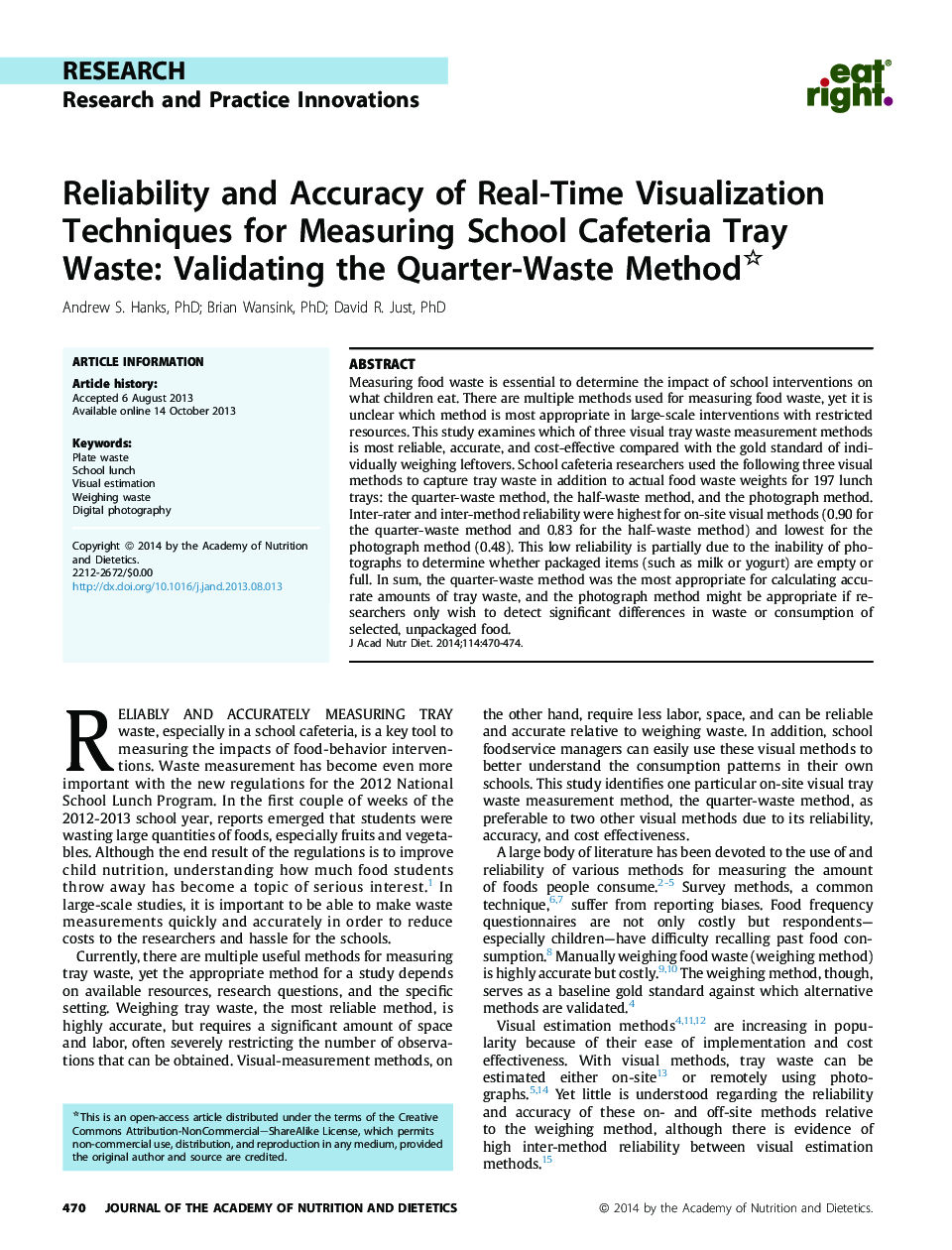| Article ID | Journal | Published Year | Pages | File Type |
|---|---|---|---|---|
| 5869565 | Journal of the Academy of Nutrition and Dietetics | 2014 | 5 Pages |
Abstract
Measuring food waste is essential to determine the impact of school interventions on what children eat. There are multiple methods used for measuring food waste, yet it is unclear which method is most appropriate in large-scale interventions with restricted resources. This study examines which of three visual tray waste measurement methods is most reliable, accurate, and cost-effective compared with the gold standard of individually weighing leftovers. School cafeteria researchers used the following three visual methods to capture tray waste in addition to actual food waste weights for 197 lunch trays: the quarter-waste method, the half-waste method, and the photograph method. Inter-rater and inter-method reliability were highest for on-site visual methods (0.90 for the quarter-waste method and 0.83 for the half-waste method) and lowest for the photograph method (0.48). This low reliability is partially due to the inability of photographs to determine whether packaged items (such as milk or yogurt) are empty or full. In sum, the quarter-waste method was the most appropriate for calculating accurate amounts of tray waste, and the photograph method might be appropriate if researchers only wish to detect significant differences in waste or consumption of selected, unpackaged food.
Related Topics
Life Sciences
Agricultural and Biological Sciences
Food Science
Authors
Andrew S. PhD, Brian PhD, David R. PhD,
